Legendary Basilisk With Deadly Petrifying Stare – King Of The Serpents
A. Sutherland - AncientPages.com - Who or what was this mysterious creature that could kill just by looking at you?
It is described by ancient writers and philosophers who often wondered about the creature's appearance and function.
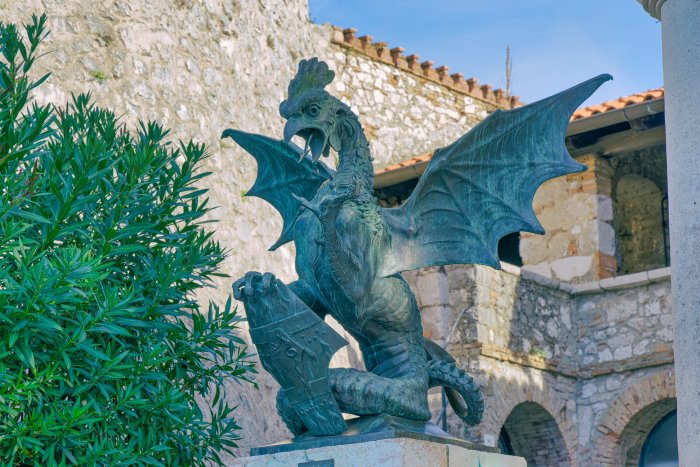 Rijeka Basilisk statue at the Trsat castle court. Credit: Adobe Stock -Dario Bajurin
Rijeka Basilisk statue at the Trsat castle court. Credit: Adobe Stock -Dario Bajurin
Pliny described the Basilisk as a snake with white spots or stripes, fiery breath, and a death-dealing cry, and the creature could drive people mad with its poison. It was believed that the Basilisk had one thing in common with Medusa: the ability to strike onlookers dead by its glance alone.
"It destroys all shrubs, not only by its contact but those even that it has breathed upon; it burns up all the grass and breaks the stones."
"To this dreadful monster, the effluvium of the weasel is fatal, a thing that has been tried with success, for kings have often desired to see its body when killed; so true is it that it has pleased Nature that there should be nothing without its antidote."
" The animal is thrown into the hole of the Basilisk, which is easily known from the soil around it being infected. The weasel destroys the Basilisk by its odor but dies in this struggle of nature against its own self."
In later legends, however, the Basilisk appears to have grown in size. In medieval times, the creature had a mysterious power to kill itself by gazing at itself in a mirror or hearing the rooster's crowing. Some contemporary travelers had a tradition of carrying roosters around with them.
Writers such as Jonathan Swift, Leonardo Da Vinci, and Albertus Magnus often linked the Basilisk to alchemy.
When the terrible Basilisk is nothing more than only ashes, these ashes retain magical properties that were sought after by alchemists of the thirteenth century. As one ancient legend says, an alchemist uses the creature's ashes to turn silver into gold. Perhaps this terrible creature's impressive power may remain with him even after death.
The basilisk and the weasel, by Marcus Gheeraerts the Elder. The cockatrice (pictured) became seen as synonymous with the basilisk when the "basiliscus" in Bartholomeus Anglicus' De proprietatibus rerum (ca 1260) was translated by John Trevisa as "cockatrice" (1397).
Among the Basilisk's magical properties, especially one of them was widely known among the ancient people. The creature had the power to protect whatever you wanted to keep safe from danger like theft or attack.
In the late classical era, many Gnostic seals depicted the Basilisk to ward off evil. The beast is also mentioned in Geoffrey Chaucer's "Canterbury Tales," but the author calls it a Basilicok. Later, Basilisk's name appeared in works by William Shakespeare, Voltaire, and Abraham Stoker (or Bram Stoker), an Irish author famous today for his 1897 Gothic horror novel "Dracula."
Fascinating Myths And Legends From Across The World
According to Marianne Moore's Poetry, the Basilisk is a "machine-like creature, sensitive to its environment and able to register noise through vibrations. The basilisk's parts are "smooth-working" and efficient.
Its maneuverability is impressive and resembles the mechanisms deployed to recycle them as copies, images, and reproductions.
Sometimes known as the Jesus Christ lizard because of its ability to walk on water, the mysterious Basilisk is also a symbol of Christian divinity; it represents the faith in things beyond human perception and understanding.
Otherwise, in early Christian beliefs, the Basilisk was a symbol of the devil in his form as the one responsible for tempting Adam and Eve. It was also stunning in color and shape; however, it was deadly to the human race.
Written by – A. Sutherland - AncientPages.com Senior Staff Writer
Updated on July 19, 2022
Copyright © AncientPages.com All rights reserved. This material may not be published, broadcast, rewritten or redistributed in whole or part without the express written permission of AncientPages.com
Expand for referencesReferences:
V. Bazin, Marianne Moore and the Cultures of Modernity
Goldstein, J. 101 Amazing Mythical Beasts and Legendary Creatures
Matthews, J., Matthews, C. The Element Encyclopedia of Magical Creatures
More From Ancient Pages
-
 Surprising Evidence Of Prehistoric Human Activity In Falkland Islands – Europeans Were Not The First Settlers
Archaeology | Oct 29, 2021
Surprising Evidence Of Prehistoric Human Activity In Falkland Islands – Europeans Were Not The First Settlers
Archaeology | Oct 29, 2021 -
 Mystery Of The Tower Of Babel – The Mountain Of God Or A Symbol Of Chaos And Ignorance?
Biblical Mysteries | Oct 14, 2014
Mystery Of The Tower Of Babel – The Mountain Of God Or A Symbol Of Chaos And Ignorance?
Biblical Mysteries | Oct 14, 2014 -
 Mystery In The Stones: Rujm El-Hiri (Wheel Of Ghosts) Was Not An Ancient Observatory – So Why Was It Built? – New Study
Archaeology | Jan 2, 2025
Mystery In The Stones: Rujm El-Hiri (Wheel Of Ghosts) Was Not An Ancient Observatory – So Why Was It Built? – New Study
Archaeology | Jan 2, 2025 -
 Eye Of Providence – Powerful, Secret Symbol With Deep Meaning
Ancient Symbols | Feb 13, 2018
Eye Of Providence – Powerful, Secret Symbol With Deep Meaning
Ancient Symbols | Feb 13, 2018 -
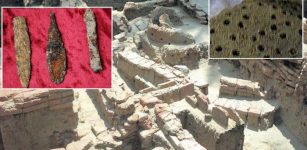 Keeladi, India: Ancient Residents Along Vaigai River Had Adopted Highly Progressive Technologies
Archaeology | Aug 28, 2020
Keeladi, India: Ancient Residents Along Vaigai River Had Adopted Highly Progressive Technologies
Archaeology | Aug 28, 2020 -
 407-Million-Year-Old Plant Fossil Challenges Long-Held Theory On Fibonacci Spirals Found In Nature
Evolution | Jun 22, 2023
407-Million-Year-Old Plant Fossil Challenges Long-Held Theory On Fibonacci Spirals Found In Nature
Evolution | Jun 22, 2023 -
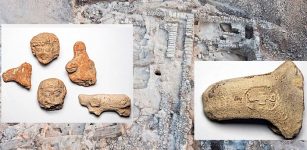 Kingdom Of Judah: Government Complex And 120 Seal Impressions Stamped On Jars – Unearthed
Archaeology | Jul 23, 2020
Kingdom Of Judah: Government Complex And 120 Seal Impressions Stamped On Jars – Unearthed
Archaeology | Jul 23, 2020 -
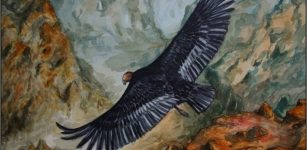 The Eagle And The Condor Prophecy: A 2,000-Year-Old Message For The Future
Featured Stories | Apr 21, 2017
The Eagle And The Condor Prophecy: A 2,000-Year-Old Message For The Future
Featured Stories | Apr 21, 2017 -
 17 Mysterious Miniature Coffins In Scotland Remain An Unsolved Enigma
Artifacts | Feb 24, 2018
17 Mysterious Miniature Coffins In Scotland Remain An Unsolved Enigma
Artifacts | Feb 24, 2018 -
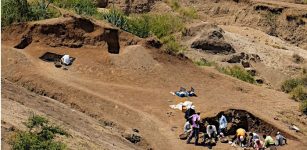 Investigation Of A 2.9-Million-Year-Old Site Reopens Case Of Who Made First Stone Tools
Archaeology | Feb 9, 2023
Investigation Of A 2.9-Million-Year-Old Site Reopens Case Of Who Made First Stone Tools
Archaeology | Feb 9, 2023 -
 On This Day In History: Earthquake In Pompeii, Italy Occurred – On Feb 5, 62 AD
News | Feb 5, 2017
On This Day In History: Earthquake In Pompeii, Italy Occurred – On Feb 5, 62 AD
News | Feb 5, 2017 -
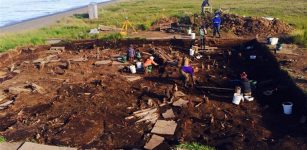 Archaeologists uncover new Yup’ik artifacts near Quinhagak, Southwest Alaska
Artifacts | Aug 28, 2015
Archaeologists uncover new Yup’ik artifacts near Quinhagak, Southwest Alaska
Artifacts | Aug 28, 2015 -
 Incredible 5,000-Year-Old Temple Complex In Orkney Could Re-Write History Of Scotland
Civilizations | Jul 30, 2014
Incredible 5,000-Year-Old Temple Complex In Orkney Could Re-Write History Of Scotland
Civilizations | Jul 30, 2014 -
 Hybrid Camels Revealed In Ancient Arab Temple Art At Hatra, Northern Iraq
Archaeology | Mar 15, 2022
Hybrid Camels Revealed In Ancient Arab Temple Art At Hatra, Northern Iraq
Archaeology | Mar 15, 2022 -
 Joseph Pujol – The Professional Farter Who Entertained People
Featured Stories | Jan 29, 2020
Joseph Pujol – The Professional Farter Who Entertained People
Featured Stories | Jan 29, 2020 -
 DNA Reveals How The Vikings Changed Scandinavian Migration And Ancestry
Archaeology | Jan 5, 2023
DNA Reveals How The Vikings Changed Scandinavian Migration And Ancestry
Archaeology | Jan 5, 2023 -
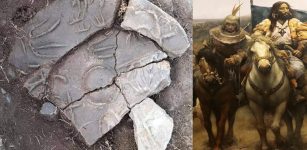 Lost Ancient Dragon City Of The Xiongnu Empire Discovered In Mongolia
Archaeology | Jul 22, 2020
Lost Ancient Dragon City Of The Xiongnu Empire Discovered In Mongolia
Archaeology | Jul 22, 2020 -
 Humans In Africa Fled To The Mountains During The Last Ice Age
Archaeology | Aug 9, 2019
Humans In Africa Fled To The Mountains During The Last Ice Age
Archaeology | Aug 9, 2019 -
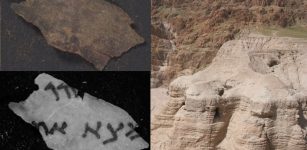 Hidden Text Discovered On Dead Sea Scrolls Reveals An Unknown Manuscript Is Still Missing
Archaeology | May 5, 2018
Hidden Text Discovered On Dead Sea Scrolls Reveals An Unknown Manuscript Is Still Missing
Archaeology | May 5, 2018 -
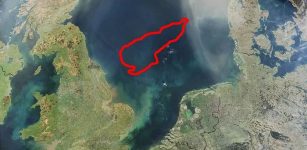 Magnetic Fields Used To Explore Doggerland And Other Prehistoric Submerged Sites
Archaeology | Mar 10, 2023
Magnetic Fields Used To Explore Doggerland And Other Prehistoric Submerged Sites
Archaeology | Mar 10, 2023

